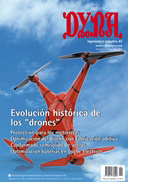ACCIONAMENTOS DE RELUCTANCIA AUTOCONMUTADOS CON CONTROL DE PAR PARA DIRECCIÓN ASISTIDA ELECTRICA
Palabras clave:
dirección asistida eléctrica, accionamientos con motores de reluctancia autoconmutados, control de par, electric power steering, switched reluctance motor drives, torque controlResumen
La dirección asistida es ya un dispositivo de serie en los automóviles comerciales. La dirección asistida eléctrica se está convirtiendo en una alternativa a la tradicional dirección asistida hidráulica. En estos momentos el accionamiento eléctrico comúnmente utilizado para esta aplicación utiliza el motor de corriente continua con escobillas. Hoy por hoy, diferentes accionamientos eléctricos se ven como una opción de futuro, aunque el mejor candidato es el accionamiento con motor síncrono con imanes permanentes. No obstante, debido a su sencillez constructiva, ausencia de imanes permanentes y tolerancia a faltas, el accionamiento con motor de reluctancia autoconmutado es una alternativa que no debe ignorarse. En este artículo se presenta un accionamiento con un motor de reluctancia autoconmutado para dirección asistida eléctrica para automóviles de tamaño medio con una fuerza en el eje de la cremallera (Rack Axis Force) de 10 kN. El accionamiento está constituido por un motor de reluctancia autoconmutado de cuatro fases con 8 polos en el estator y 6 polos en el rotor, alimentado a través de un convertidor electrónico de potencia con interruptores Power Mosfets, encoder incremental y controlador digital de señal aplicado al par, minimizando su rizado y mitigando las perturbaciones que aparecen al despejar una falta, trabajando el accionamiento con una o dos fases abiertas. El accionamiento se ha construido y se ha probado en el laboratorio, confirmando los resultados experimentales su idoneidad como accionamiento para dirección asistida eléctrica.Descargas
Publicado
2016-05-01
Número
Sección
ARTICULOS

